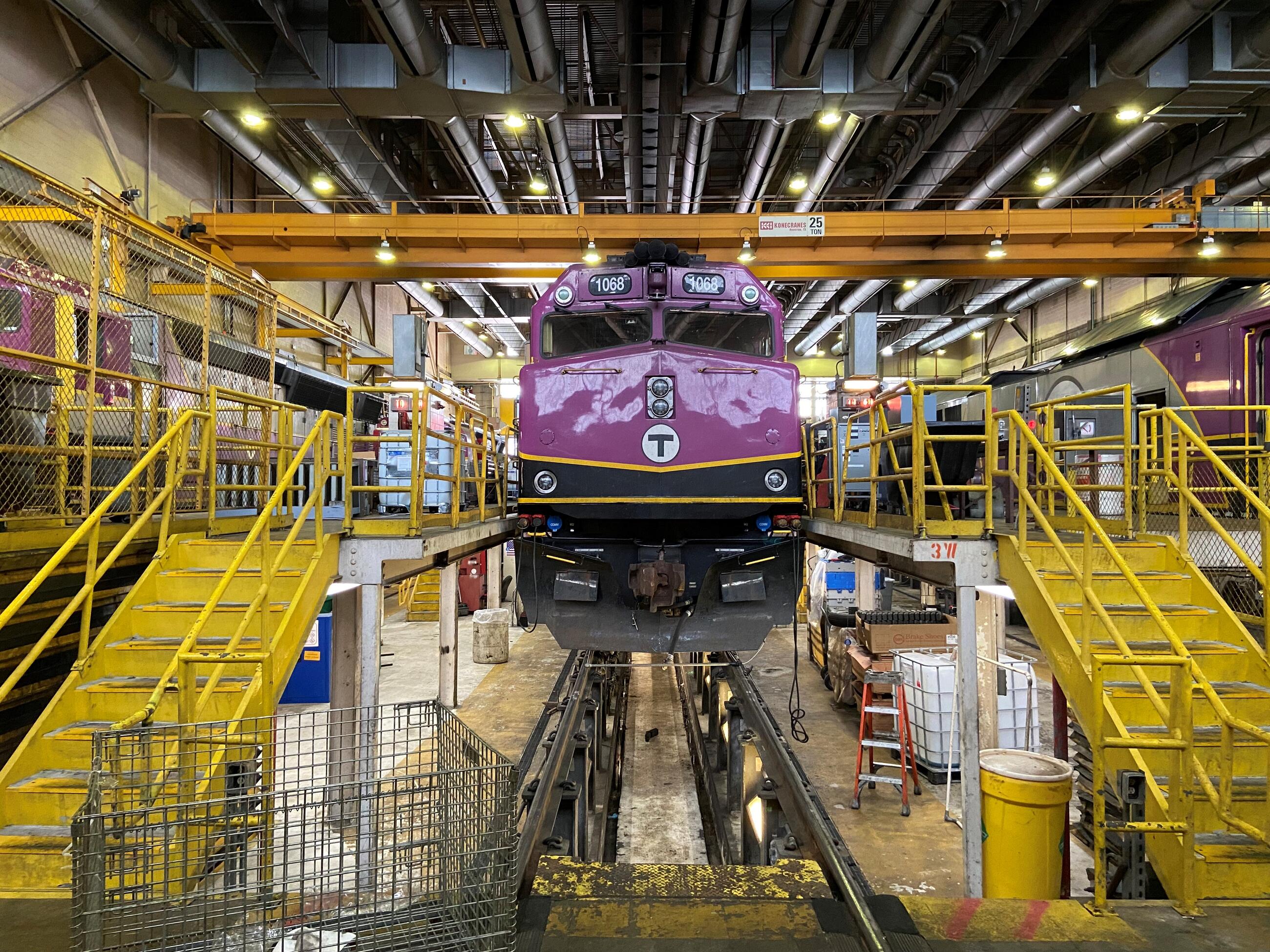South-Side Maintenance and Layover Facility

Updated on September 18, 2024
We are building a new maintenance and layover facility to address the needs of Commuter Rail operations on the south side of the system, which begins and ends at Boston's South Station. The South-Side Maintenance and Layover Facility (SSMF) project will construct a new facility at the existing Readville Layover Facility in Boston’s Hyde Park neighborhood.
Design contract awarded: May 2021
Budget: $5 million (for initial design and environmental work)
Status: 15% design, environmental review ongoing
Building a Better T
As part of our $9.6 billion, 5-year capital investment plan, we're renovating stations, modernizing fare collection systems, upgrading services for our buses, subways, and ferries, and improving the accessibility of the entire system.
Why We’re Doing This Work
We have only one facility for major repairs and replacement of Commuter Rail equipment—the Boston Engine Terminal (BET) in Somerville. All locomotives and coaches serving the Commuter Rail network's south side currently travel six miles round trip between South Station and BET for maintenance. By building this facility, we can accomplish the following:
- Reduce maintenance and capital costs
- Create operational efficiency and redundancy
- Reduce vulnerability to climate change
- Eliminate extensive and costly detours
- A new equipment maintenance building
- A relocated and upgraded layover yard
- Crew amenities and employee parking
- Associated track, communication, safety, and security improvements
- Improves train readiness and reliability throughout the Commuter Rail system
- Improves equipment availability, on-time performance, and rider experience
- Supports MBTA Rail Transformation initiatives with a design that allows for the maintenance requirements of our future fleet
Downloads
Community Input Noise Study
At the request of the MBTA, the South-side Maintenance and Layover Facility project carried out a study to investigate noise complaints in the Readville and Hyde Park areas.
In September 2022, the team issued a monthlong survey that resulted in 148 responses. Based on these responses, the team selected four locations to install noise-monitoring devices and collect data through May 2023. Community members were encouraged to report additional noise complaints. Noise monitoring equipment has since been removed.
Download the Community Input Noise Study (PDF, 28.3MB)
Expanded Environmental Notification Form (EENF)
The Expanded Environmental Notification Form (EENF) that was submitted to the Massachusetts Environmental Policy Act (MEPA) unit is available for review. The Executive Summary outlines the EENF and includes a link to the project submission page.
The comment period for the EENF is closed. The MBTA provided a supplemental memo on the South-Side Maintenance Facility purpose and use to MEPA during the extended review period, which closed on January 23, 2023.
- MBTA South-Side Maintenance and Layover Facility, Readville Yard 2 EENF Supplemental Memorandum (PDF, 147.83 KB)
- EENF Executive Summaries:
- English (PDF, 717.96KB)
- Haitian Creole (PDF, 862.42KB)
- Spanish (PDF, 852.69KB)
- Massachusetts Environmental Policy Act (MEPA) Environmental Monitor project submission page
- Environmental Justice Screening Forms:
- English (PDF, 3.39MB)
- Haitian-Creole (PDF, 3.47MB)
- Spanish (PDF, 4.28MB)
On January 30, 2023, the Secretary of Environmental Affairs issued a certificate on the EENF. The certificate requires preparation of a Draft Environmental Impact Report.
To view the certificate, complete the following steps:
- Open the MEPA Environmental Monitor site
- In the search fields, select year: 2022 and publication date: November 9, 2022
- Find MBTA South-Side Maintenance and Layover Facility (EEA No. 16622)
Contact Us
For all questions and comments related to the South-Side Maintenance Facility, please contact the project team at SSMF@MBTA.com.
Sign up for updates
Get South-Side Maintenance Facility news, updates, and information delivered to your inbox.
Building a Better T
As part of our $9.6 billion, 5-year capital investment plan, we're renovating stations, modernizing fare collection systems, upgrading services for our buses, subways, and ferries, and improving the accessibility of the entire system.